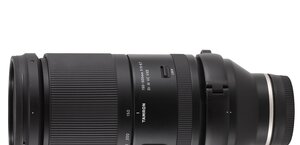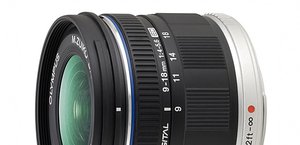Carl Zeiss Distagon T* 35 mm f/1.4 ZE/ZF.2
3. Build quality
The picture below shows the tested lens positioned between the Nikkor AF-S 24-70 mm f/2.8 and the Sigma 1.4/30 designed for smaller sensors.
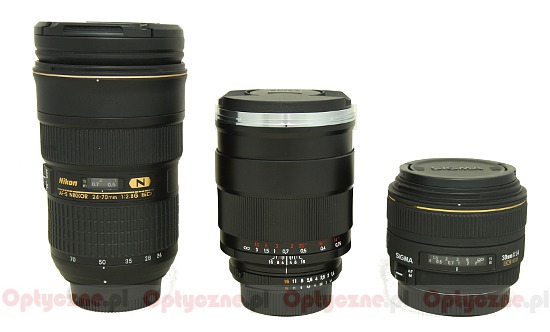 |
Please Support UsIf you enjoy our reviews and articles, and you want us to continue our work please, support our website by donating through PayPal. The funds are going to be used for paying our editorial team, renting servers, and equipping our testing studio; only that way we will be able to continue providing you interesting content for free. |
- - - - - - - - - - - - - - - - - - - - - - - - - - - - - - - - - - - - - - - - - - - - - - - -
The version designed for Nikon reflex cameras, tested by us this time, is equipped with contacts providing the body with information about focal lengths and aperture. The rear element is 31 mm in diameter and moves slightly during focusing, being so to speak on the same level as the mount when the lens is set at infinity and hiding inside about 0.5 cm deep when we pass to the minimum focus.
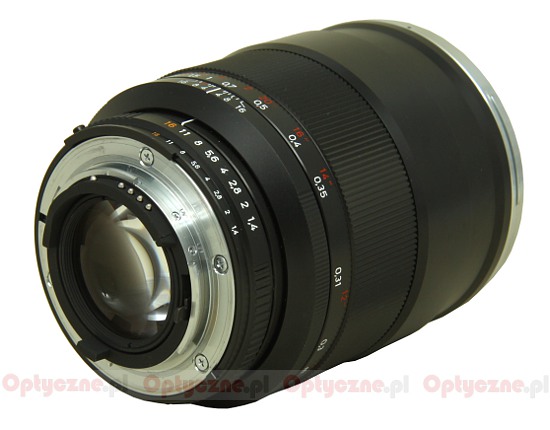 |
Right behind the mount, already on the black, metal casing, there is a narrow aperture ring. We have the range from f/1.4 to f/16 at our disposal, with the change every 0.5 EV step. The 1/3 EV step is available when we set aperture from the camera’s menu level. Right behind the ring the casing becomes wider and it features a depth of field scale with the markings for apertures ranging from f/16 to f/2.8.
The further part of the lens’s casing, which is as high as 5 cm, consists, by and large, of a manual focus ring. The bottom part of the ring features a distance scale expressed in feet, inches and meters. Next 23 mm of the ring is occupied by metal ribbing which task is to ensure better grip and more comfortable work. The ring itself moves smoothly and is very pleasantly damped. Running through the whole scale takes a turn through about 140 degrees.
The front element system extends along with a significant part of the barrel while moving the focus ring. That movement has similar range than the movement of the rear element, described earlier – it means that here the focus is set by moving the whole optical system at once.
The lens ends with a shiny hood mount. On the outer side of the final edge of the lens we get a non-rotating filter thread 72 mm in diameter. It surrounds that part of the casing which features an inscription with the name and parameters of the lens; that part, for a change is situated around the front element, 54 mm in diameter.
The Zeiss Distagon T* 1.4/35 consists of 11 elements positioned in 9 groups. The producer doesn’t mention any special kinds of glass. In the case of the Zeiss company, though, it doesn’t necessarily mean that such glass wasn’t used because that company rarely boasts of such things. Inside you can also find a circular aperture with nine diaphragm blades.
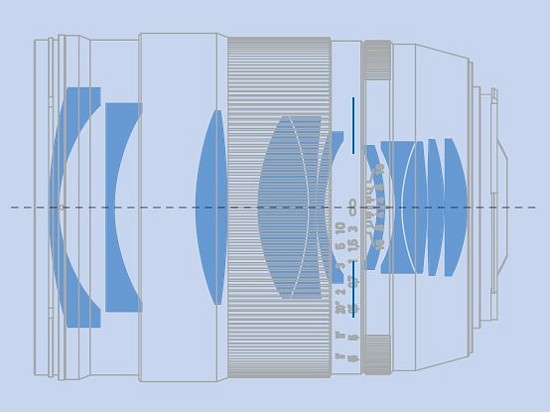 |
In the accessory kit the buyer gets both caps and a petal-type lens hood which is made of metal and covered with black velour inside.
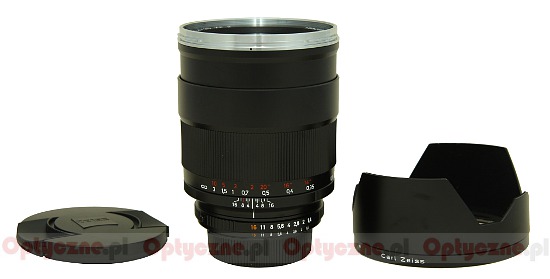 |




